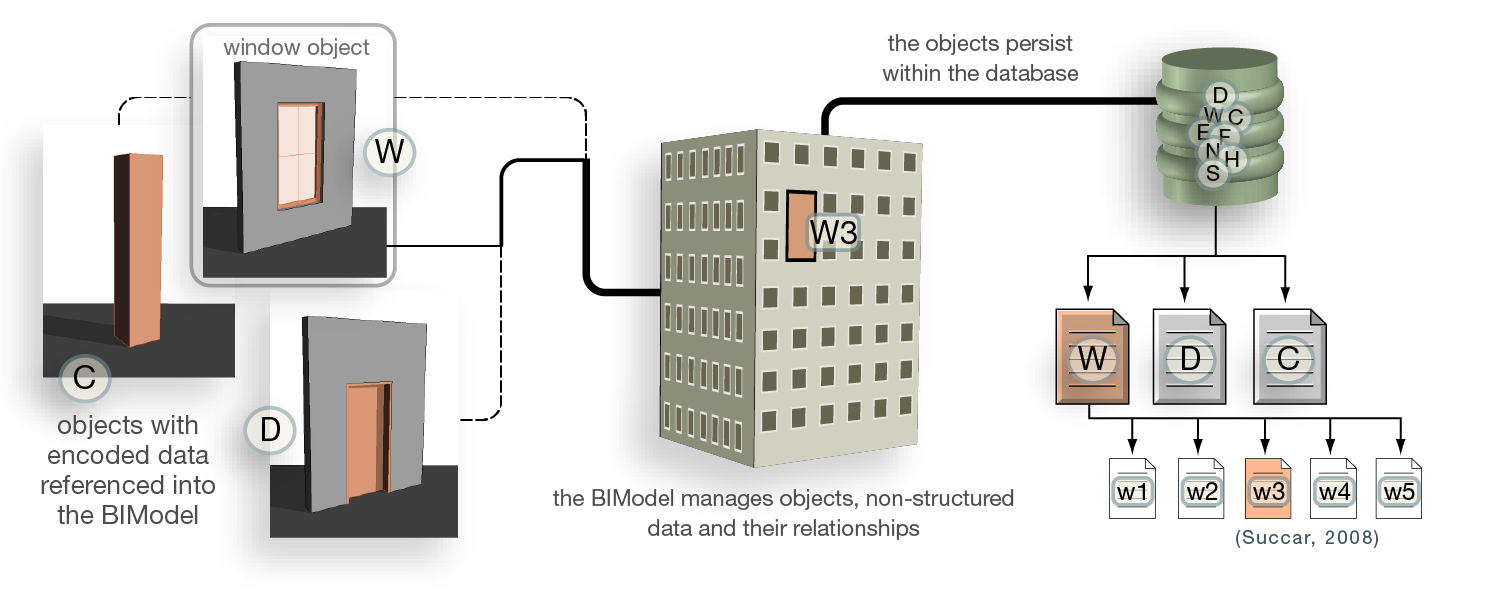Published on December 18, 2005 | Last Updated on September 13, 2025
Not all models or modellers qualify as BIM. Although there are neither clear definitions nor umbrella agreements of what constitutes a Building Information Modeller, researchers and software developers alike allude to a lowest common denominator.
This episode is available in other languages. For a list of all translated episodes, pleaser refer to https://bimexcellence.org/thinkspace/translations/. The original English version continues below:
This non-declared denominator is a set of technological and procedural attributes that BIModels (Building Information Models) need to have:
- Must be Three Dimensional,
- built from Objects (solid modelling – object oriented technology),
- have encoded and embedded [1] discipline-specific information (more than a mere database),
- have interwoven relationships & hierarchies between their objects (rules and/or constraints: similar to a relationship between a wall and a door where a door creates an opening in a wall),
- and describes a Building of some sort.

Figure 2.1: Common Denominator for a BIModel (updated image, 2015)
Again, the above attributes are the inclusive definitions of a BIModel. Needless to say, each proprietary and non-proprietary BIM package adds its own qualifications to the attribute pool in an attempt to squeeze its conceptual and commercial competitors out of the BIM acronym itself. Whether a package is interoperable, fully parametric or allows digital fabrication output has nothing to do with the inclusive set but are additional (and highly welcome) attributes. Exclusive definitions (those that exclude others) are quite simple: Surface Modellers (like SketchUp® for example), Entity-Based Modellers (like 3D AutoCAD®) and Geometric Modellers (like Autodesk® VIZ) do not qualify as a BIModellers. The exclusion is also passed onto 3D object-based platforms that are outside the Architectural Engineering and Construction domain (like SolidWorks®, Solid Edge® and Inventor®).

Figure 2.2: Non-BIM Modellers (updated image, June 2015)
To be continued; next Episode will focus on Information within Building Information Modelling
References:
[1] Blackler, F. (1995) Knowledge, Knowledge Work and Organizations: An Overview and Interpretation, Organization Studies, 16, 6, 1021-1046.
Cite as: BIMe Initiative (2025), 'Episode 2: Focus on Modelling', https://bimexcellence.org/thinkspace/the_bim_episode-3/. First published 18 December 2005. Viewed 31 December 2025

Great ideas…especially building information modelling